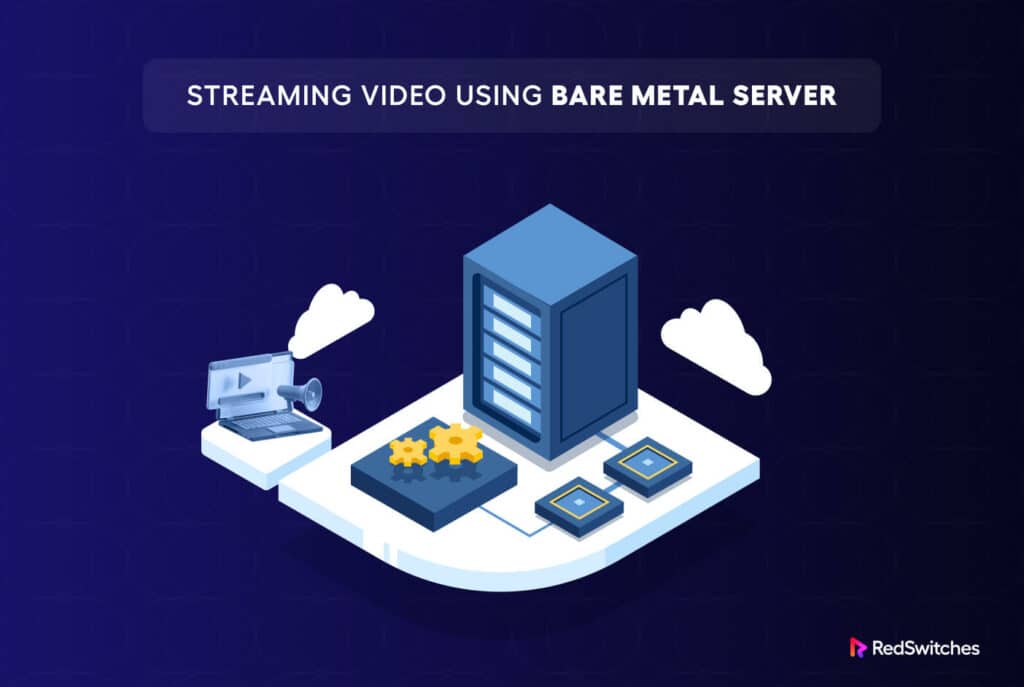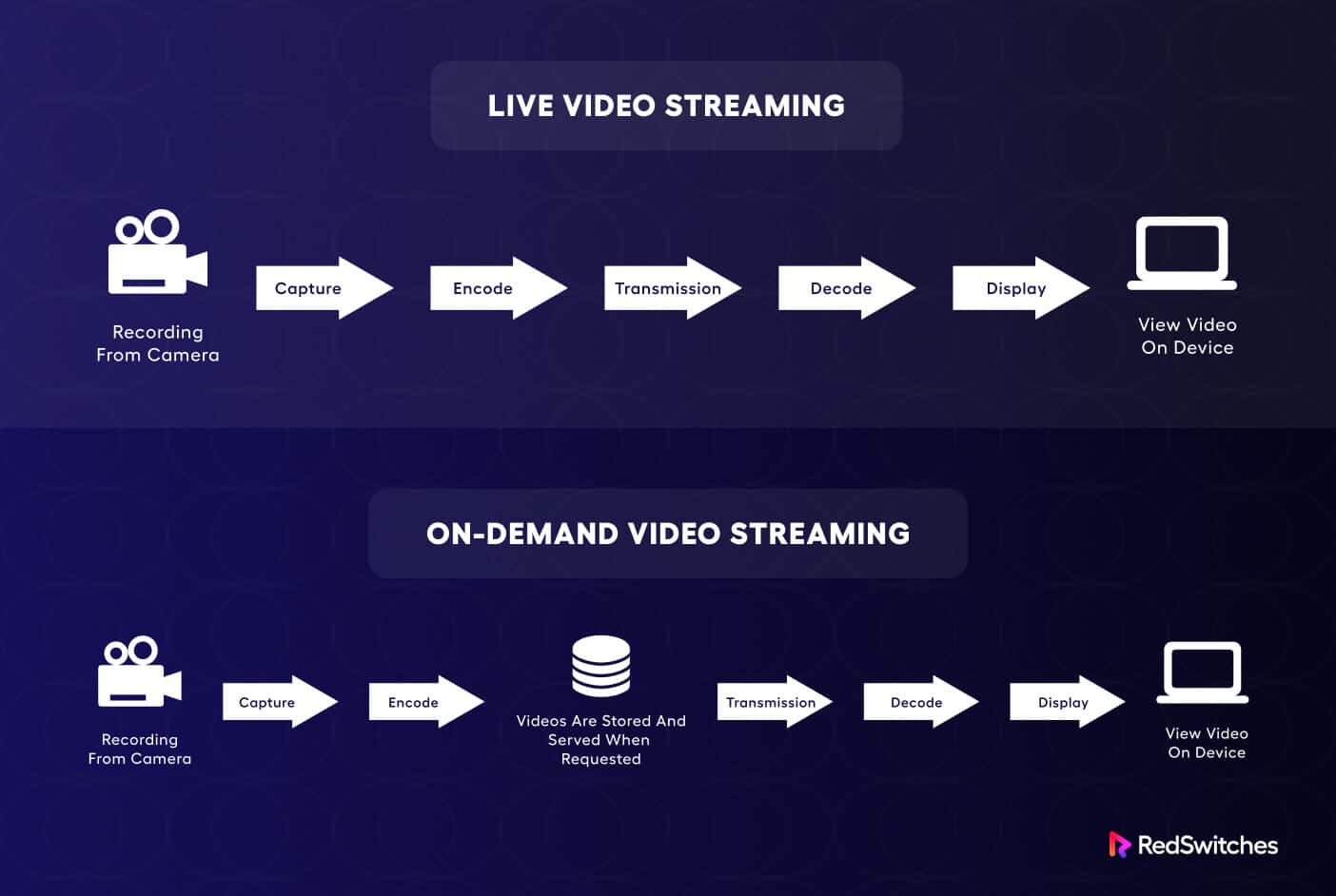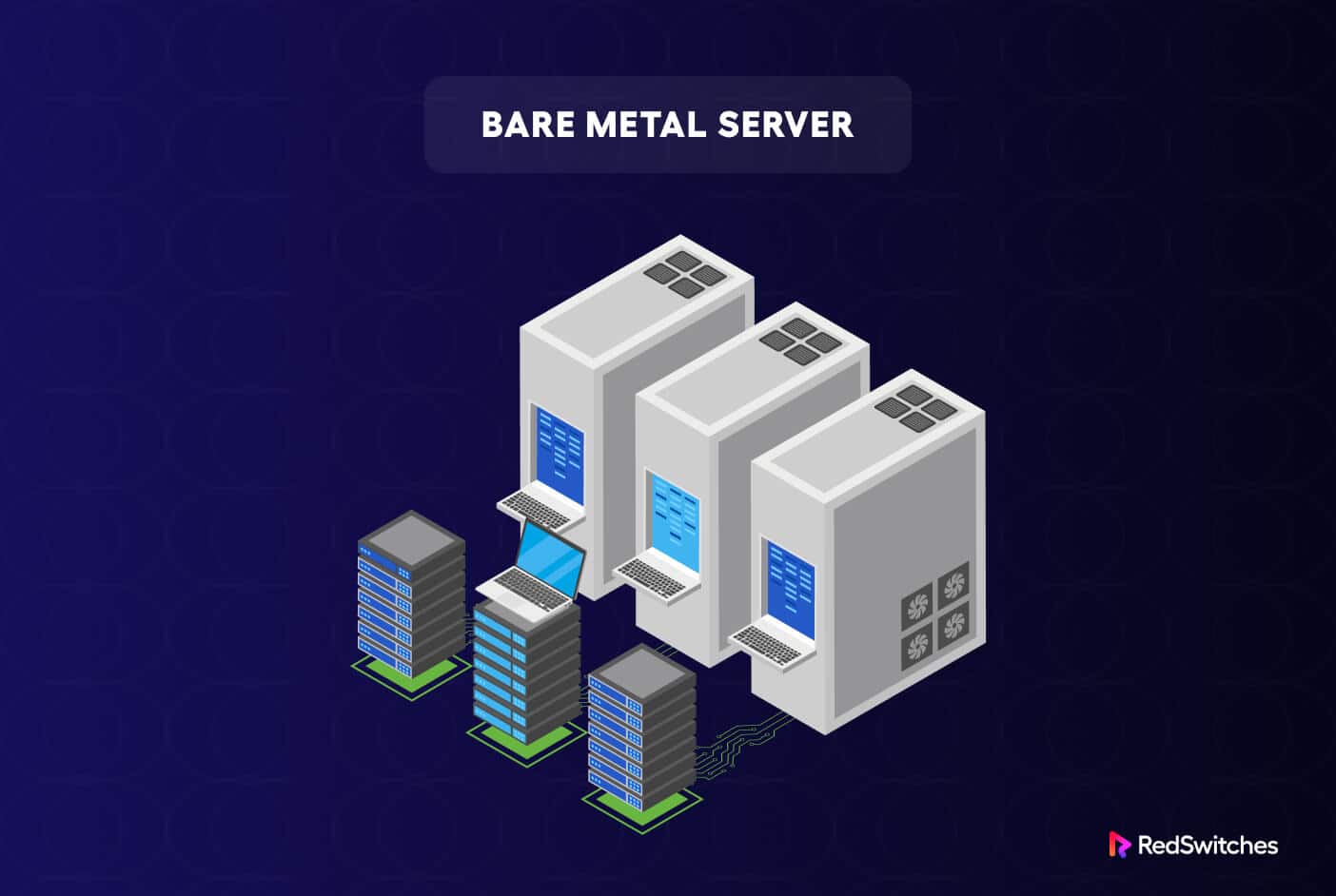In an era where streaming video reigns supreme and media consumption has become integral to our digital lives, the pursuit of uninterrupted streaming has taken center stage.
YouTube, Netflix, Amazon Prime, and many other similar platforms have changed how many people enjoy video content without major hiccups.
As the demand for immersive, high-quality media experiences skyrockets, technology pioneers are ceaselessly exploring innovative solutions to meet the ever-growing expectations of global viewers.
In this article, we’ll discuss the idea of streaming video, how it works, a critical challenge in delivering streaming video, and a great solution for this challenge.
Let’s start with a brief overview of how media streaming works.
Table Of Contents
- How Does Video Streaming Work?
- Bare Metal Servers – Powerful Solution for Streaming Video Industry
- The Benefits of Bare Metal Servers for Streaming Video
- Shortcomings of Bare Metal Servers For Streaming Videos
- Factors to Consider When Opting for Bare Metal Servers for Media Streaming
- RedSwitches Bare Metal Servers for Video Streaming
- Conclusion
- FAQ
How Does Video Streaming Work?
Streaming works by dividing content, such as movies, into small data packets.
The core content delivery infrastructure takes care of this process and ensures that the right packages are delivered to a client. The browser or the app running on the user’s device receives these data packets. Next, the app interprets the data in the packages and arranges them in the proper order. Once the app has enough data, the video starts playing.
This content delivery model has worked well for businesses and users. However, streaming content businesses cannot serve a global audience from a single location. Such an arrangement would only serve a limited audience and introduce lag and buffering for the audience located away from the serving location.
That’s why streaming media businesses need a network of locations so that they can serve audiences from a location that’s closer to the audience. This arrangement also allows the business to introduce content delivery and moderation policies to improve user experience and comply with local regulations.
Another important aspect of streaming video operation is the need for a robust infrastructure that can be easily adapted to the specific requirements of the content delivery model. Streaming media platforms require storage-intensive infrastructure that’s equally good at managing users and content delivery operations. This requires a custom-built architecture that includes high-capacity storage components and powerful processing components that can manage a large number of simultaneous users.
Bare Metal Servers – Powerful Solution for Streaming Video Industry
Over time, bare metal servers have emerged as a great solution for the streaming video industry because of the way these servers can be customized to fit the specific requirements of distributing video content to multiple users.
The good thing about bare metal servers is that a video content distribution business can easily opt for two pathways that lead to successful content delivery and smooth user experiences.
The first path is the IPTV and video streaming solutions built on top of bare metal servers. In most cases, bare metal hosting providers provide the servers, and the business can deploy a customized or off-the-shelf IPTV and streaming video solutions. Bare metal servers provide a stable and extendable architecture that complements the software side of the business processes.
The second path is opting for custom-built bare metal servers and software environments. This option allows businesses to precisely control how the content delivery process uses the storage components and processing units to deliver content to users.
Businesses in the streaming video industry can opt for either of the paths and leverage bare metal servers to ensure their huge data is properly stored and distributed.
Now let’s see the major benefits bare metal servers bring to the streaming video industry.
The Benefits of Bare Metal Servers for Streaming Video
Here’re the major benefits streaming video businesses get when they opt for a bare metal-based infrastructure.
Tremendous Reliability and Performance
Bare metal servers are generally single tenant infrastructure. That’s why they often outperform traditional shared hosting plans by eliminating resource sharing between hosted accounts. This guarantees a smooth, lag-free experience to the end users who don’t have to worry about inadequate resources affecting their enjoyment.
Highly Customizable Options
Bare metal servers give streaming video vendors more control and freedom to customize their delivery setup. They can choose and install their preferred content delivery software, optimize network settings to ensure smooth streaming, and adjust server resources based on the needs of their audience. Essentially, this flexibility allows businesses to create a streaming environment that suits their specific business requirements and provides a better experience for their viewers.
Enhanced Security
A streaming video vendor generally handles sensitive user data and information. Bare metal servers provide a higher level of security than other hosting solutions. As such, there is a much lower risk of cyber security incidents affecting server resources or compromising user data.
Additionally, businesses can ensure the security of their content and minimize losses due to privacy and content leakages. This leads to higher revenues and business stability.
Easy Scalability
Bare metal servers can be scaled to accommodate increasing traffic and demands on resources. As the number of viewers increases, the business can add additional resources to accommodate the demands. In extreme cases, businesses can opt to upgrade infrastructure components to ensure sustained services as technology evolves and user requirements change.
Shortcomings of Bare Metal Servers For Streaming Videos
Despite the above benefits, businesses should know that bare metal servers are not the perfect fit for streaming video businesses.
These businesses should know the following factors that could throw a spanner in their operations.
Cost
Put simply, bare metal servers are more expensive than other hosting solutions. The upfront setup costs and ongoing maintenance expenses can be a significant investment for streaming video businesses, especially those with limited budgets.
Requirement for Dedicated Technical Expertise
Setting up and managing a bare metal server requires technical knowledge and skills for configuring, optimizing, and troubleshooting issues. This means businesses either need to have in-house expertise in server management or partner with a third party for infrastructure management.
High Maintenance Responsibility
Continuing the previous point, the business is also responsible for server maintenance. This includes applying security patches, hardware upgrades, and regular monitoring of the server operations. Businesses need to allocate time and resources to ensure the infrastructure’s optimal performance and stability.
Lack of Built-in Redundancy
Bare metal servers typically lack built-in redundancy. In case of hardware failures or unexpected downtime, businesses may experience service interruptions. As a countermeasure, businesses need to integrate redundancy within the hosting infrastructure. This could be in the form of failover components or high-availability infrastructure that is fault-tolerant to a high degree.
Factors to Consider When Opting for Bare Metal Servers for Media Streaming
Now that you know the pros and cons of opting for bare metal servers for streaming video operations, the next question is how to pick the right bare metal server infrastructure for your business.
This means matching the business requirements of streaming video operations to the specifics of bare metal servers. As such, you need to consider the following factors.
Processing Power
Media streaming involves encoding and decoding large chunks of data in real-time, which requires tremendous processing power. So, the first requirement is a powerful CPU capable of efficiently handling the encoding/decoding tasks. This is a critical requirement for ensuring smooth playback and minimal buffering at the user end.
RAM
Alongside the CPU, you need sufficient RAM to accommodate the encoding/decoding data. In most cases, the RAM requirements fluctuate to a certain extent because of the changes in the process.
So, you need to ensure that your server has enough RAM to facilitate near real-time data processing. A good rule of thumb is to calculate the highest volume of RAM you need and then have some more to take care of emergency spikes in RAM requirements.
High Bandwidth and Network Capacity
This is perhaps the easiest question to answer for the streaming media businesses.
Everyone knows the content delivery model requires significant bandwidth to transmit data reliably and quickly. In most cases, businesses can come up with a fair idea of their bandwidth requirements (mainly by dividing the bandwidth usage by the number of users).
It is always a good idea to discuss the bandwidth requirements for your business because they can advise you on how to better use bandwidth and network capacity to the fullest.
Storage Capacity and Performance
Media files can be large and you need to make sure your infrastructure has sufficient storage capacity to manage all the current and upcoming content.
Another important aspect of storage components is the need for high performance under significant load. The storage component must server multiple concurrent requests and fetch and deliver the right data to the processes.
You should consider NVMe and SSD drives for the storage part of your infrastructure because of the reputation of these devices for performance.
RedSwitches Bare Metal Servers for Video Streaming
Redswitches offers high-performance, reliable bare metal servers for video streaming and IPTV projects.
All Redswitches servers offer dedicated resources that ensure smooth performance and adequate support for streaming video businesses.
At RedSwitches, scalability is our specialty. Say goodbye to worrying about your servers lagging behind your growing business needs. Our dedicated team ensures that your bare metal servers are ready to scale, delivering uncompromised performance and a lag-free experience to your users. With RedSwitches, you can expand your server capacity in just 4 hours and accommodate additional users to earn more revenue.
Conclusion
Streaming video is a resource-intensive process that requires the right infrastructure for optimal end-user experience.
When choosing a bare metal server for media streaming, prioritize factors like processing power, RAM, bandwidth, and storage capacity. Since bare metal servers are flexible and scalable, the infrastructure can accommodate your business requirements without any hitches at the viewers’ end.
FAQ
Q: Can I scale the resources of a bare metal server for video streaming?
A: Yes, many bare metal hosting providers offer simple scalability options for your infrastructure. As your video streaming requirements grow, you can typically upgrade or add resources like increasing CPU units, RAM, storage capacity, and network bandwidth. This scalability allows you to accommodate increased viewer demand or offer higher-quality video streaming.
Q: How can I ensure optimal streaming performance on a bare metal server?
A: To achieve optimal streaming performance on a bare metal server, consider adding a Content Delivery Network (CDN). These solutions reduce latency and offer smoother playback for viewers by serving content from a server closest to them. Next, you should consider transcoding to accommodate multiple bitrates and formats suitable for various devices and network conditions. This allows viewers to select their appropriate quality based on their internet connection strength.
Q: What security measures should I implement for video streaming on a bare metal server?
A: Implementing robust security measures is critical for video streaming on a bare metal server. Consider configuring firewalls, restricting access to critical ports, and using secure protocols (such as HTTPS) to protect streaming traffic.



